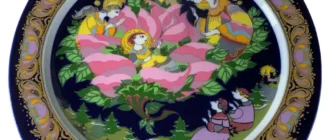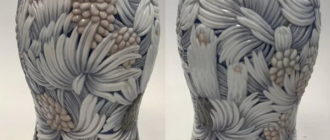
Nikolai Suetin was Kazimir Malevich’s favorite student and friend. He, like no one else, was able to perceive the ideas of Suprematism and translate them into creativity. Suetin left a mark as an artist in painting and graphics, design and architecture. But many collectors, at the mention of his name, first of all, are presented with unique porcelain of the early Soviet period. A large collection of Suetian utensils with Suprematist painting is now kept in the Hermitage.

Finding your way in art
Nikolay Suetin was born on November 6, 1897. He was the son of an impoverished nobleman who ran a railway station. The future artist was interested in painting from the gymnasium and became even more interested in it in the cadet corps, where they also taught drawing.
In World War I, the cadet was mobilized, but he was lucky. He served in Vitebsk, where the People’s Art School was located. From 1918 to 1922, Suetin studied there, while remaining in the service. First, the young man studies in the workshop of Marc Chagall, then – El Lissitzky. In the same period, he met Malevich, which became a turning point on his creative path.

In 1920, devoted followers of Malevich formed the UNOVIS society, which regularly organized exhibitions in different cities. Suetin and his friend Ilya Chashnik became the leading masters of this society. Soon they, together with Malevich, moved to Petrograd, where all three received an invitation to work at the State Porcelain Factory.
At first, Suetin only painted porcelain, the form of which was developed by Malevich, but then he moved on to the author’s projects. His products were more functional, and therefore aroused interest and were in demand. During the 1920s, the artist created many original sets and individual items, and in 1932 he became the chief artist of the factory and remained in this position until his death.

Sunset of avant-garde art
The leadership position left little time for creativity: it was necessary to hold party meetings, listen to reports and prepare reports. And after the reign of socialist realism, it became completely unsafe to develop avant-garde art. In the late 1940s, the artist, like many others, was accused of formalism and almost arrested. The worst was avoided, but in the future I had to adhere to the traditions and principles of classicism in my work.
Nikolay Suetin died in 1954 and was forgotten for a long time. Only at the beginning of our century, interest in the Russian avant-garde increased so much that in 2007 the first personal exhibition of the artist was held. Now he is known as an original graphic artist and an outstanding designer who transformed Russian porcelain.





















